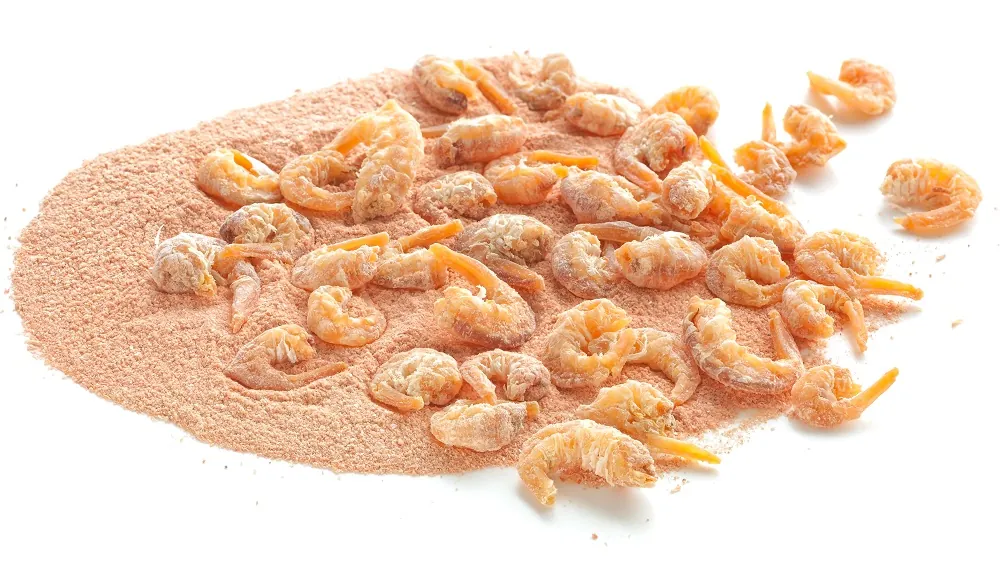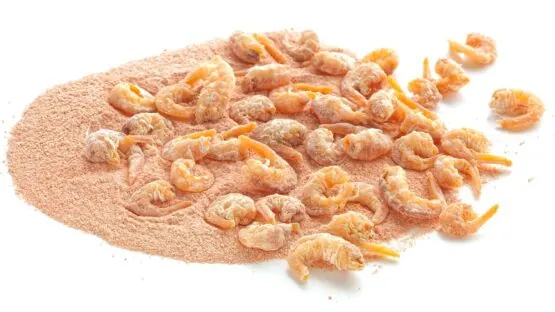Recent research published in Immunity and Ageing suggests that chitosan can be used as a potential treatment to alleviate some of the aging processes in ovaries [1].
Quickly declining fertility
Mother Nature has imposed some tough challenges on human females. They need to make the decision about motherhood sooner rather than later, as research has demonstrated that fertility declines in the early thirties and that this is accompanied by an increased likelihood of miscarriage and pregnancy complications [2].
This rapid decline in female fertility has been a subject of extensive research. However, much of this research has focused primarily on oocyte aging, while the processes involved in the aging of the ovarian microenvironment have gone understudied.
The ovarian microenvironment is essential for such processes as oocyte maturation. The follicle is the sac that contains immature eggs, and its local immune system plays a role in its development and facilitates ovulation [3-5].
Macrophages are essential components of the immune system, and they are an essential part of inflammation and phagocytosis, ”a process of ingesting a variety of cellular substrates, mainly bacteria and cellular debris” [6].
The aging oocyte
The researchers started by comparing two female systems: “reproductive system, represented by the ovary and uterus, and the digestive system, represented by the liver.” They collected those organs from mice at 3 months, 6 months, and 9 months of age. The researchers chose such an age range as it is comparable to 20- to 37-year-old women.
Unsurprisingly, they observed increased senescence markers in the ovaries at earlier stages than in the liver and uterus. Ovarian aging was also observed in diminishing numbers of primordial follicle structures that contain immature eggs. While 3-month-old mice have vast reserves, by 6 months, those reserves had already decreased by 50% and declined further at 9 months. Additionally, the researchers observed the infiltration of inflammatory cells in an ovary from the 9-month-old mice.
The increase of inflammation in the aging ovary was also confirmed by measuring several inflammatory genes in the ovaries, which were found to increase with age. The authors also used human granulosa cells, which reside inside ovaries and regulate ovarian functions, for further testing. They used hydrogen peroxide to induce aging in those cells.
In aged cells, the researchers observed increased senescence-associated secretory phenotype (SASP) factors and high levels of ROS production which indicate oxidative stress. They linked oxidative stress to mitochondrial dysfunction in those cells, as the average mitochondrial membrane potential (MMP) was lower in the aged cells.
The immune system’s impact
Aged cells were found to be more likely to be committed to programmed cell death (apoptotic cells) compared to the control group. It is essential for such cells to be cleared, as the molecules they produce can lead to significant changes in the cellular environment. The immune system plays an important role in such a clearing process; therefore, these researchers analyzed some of its components.
Macrophages can be used as an inflammatory biomarker, as they can be classified into two groups: pro-inflammatory (M1) and anti-inflammatory (M2) [6]. In tissues obtained from 9-month-old mice, the authors observed elevated levels of M1 and reduced levels of M2 compared to 3-month-old mice.
To investigate the impact of those macrophage-related changes, the authors employed gene ontology analysis of previously used tissues from 3- and 9-month-old mice. They also analyzed aged macrophages in vitro, human monocytic and granulosa cell lines, follicular fluids from patients with diminished ovarian reserve (DOR), and single-cell transcriptome data of ovaries from young and old monkeys.
In total, their gathered evidence suggested that “the aged ovary exhibited impaired macrophage phagocytosis, likely influenced by aging granulosa cells”.
Delaying ovarian aging with chitosan
Armed with a better molecular understanding of ovarian senescence, the researchers tested chitosan, a polysaccharide derivative of chitin, since previous research implicated chito-oligosaccharides in enhancing the phagocytic function of macrophages [7].
While high-molecular-weight chitosan was implicated in anti-inflammatory processes and macrophage functions [8], low-molecular-weight chitosan’s role impact on ovarian macrophages was still unexplored.
Administration of low-molecular-weight chitosan resulted in significant changes in gene expression profiles, which resulted in macrophages showing M1 and M2 characteristics simultaneously.
The researchers explain that this dual function can be beneficial in such a dynamic organ as the ovaries. The pro-inflammatory response might be necessary for clearing damaged cells and pathogens. Anti-inflammatory functions might be required for tissue recovery.
Additionally, in vivo experiments suggested that treatment with low-molecular-weight chitosan can help with senescent cell clearance, increase the number of growing follicles, and impact sex hormones.
The need for effective treatment
These scientists believe that researching the ovarian aging process is particularly important due to the global trend of delayed childbearing, which results in decreased fertility [2]. They hope that with time, research will be able to propose some interventions and therapeutic strategies to help preserve women’s fertility.
The authors summarize:
In conclusion, we elucidated advanced reproductive age appears to be associated with impaired macrophage phagocytic function and aging GCs, indicating a positive correlation between macrophage phagocytic dysfunction and DOR during ovarian aging. LMWC can enhance macrophage phagocytosis and further alleviate ovarian aging.
Literature
[1] Shen, H. H., Zhang, X. Y., Liu, N., Zhang, Y. Y., Wu, H. H., Xie, F., Wang, W. J., & Li, M. Q. (2024). Chitosan alleviates ovarian aging by enhancing macrophage phagocyte-mediated tissue homeostasis. Immunity & ageing : I & A, 21(1), 10.
[2] Weghofer, A., Barad, D., Li, J., & Gleicher, N. (2007). Aneuploidy rates in embryos from women with prematurely declining ovarian function: a pilot study. Fertility and sterility, 88(1), 90–94.
[3] Shirasuna, K., Shimizu, T., Matsui, M., & Miyamoto, A. (2013). Emerging roles of immune cells in luteal angiogenesis. Reproduction, fertility, and development, 25(2), 351–361.
[4] Duffy, D. M., Ko, C., Jo, M., Brannstrom, M., & Curry, T. E. (2019). Ovulation: Parallels With Inflammatory Processes. Endocrine reviews, 40(2), 369–416.
[5] Wu, R., Van der Hoek, K. H., Ryan, N. K., Norman, R. J., & Robker, R. L. (2004). Macrophage contributions to ovarian function. Human reproduction update, 10(2), 119–133.
[6] Yunna, C., Mengru, H., Lei, W., & Weidong, C. (2020). Macrophage M1/M2 polarization. European journal of pharmacology, 877, 173090.
[7] Zheng, K., Hong, W., Ye, H., Zhou, Z., Ling, S., Li, Y., Dai, Y., Zhong, Z., Yang, Z., & Zheng, Y. (2023). Chito-oligosaccharides and macrophages have synergistic effects on improving ovarian stem cells function by regulating inflammatory factors. Journal of ovarian research, 16(1), 76.
[8] Oliveira, M. I., Santos, S. G., Oliveira, M. J., Torres, A. L., & Barbosa, M. A. (2012). Chitosan drives anti-inflammatory macrophage polarisation and pro-inflammatory dendritic cell stimulation. European cells & materials, 24, 136–153.




